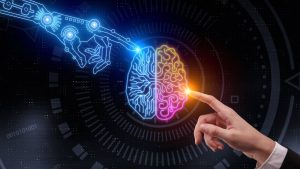European Union Addresses Potential Harmful AI
By Frank Bruni | May 28, 2021

The European Union has proposed restrictions on certain uses of artificial intelligence to protect against unethical algorithms. The rules would limit use of artificial intelligence for everyday activities such as “self-driving cars, hiring decisions, bank lending, and scoring of exams.” The proposed rules are the first of its kind to slow down the massive gains in tech to ensure protection of European citizen’s rights. Although banning certain technologies is not a permanent solution, it buys time to make sure artificial intelligence is being used ethically in the long run.
To dive deeper into the ethical issues of artificial intelligence I will discuss the Belmont Report, a report created by the National Commission for the Protection of Human Subjects of Biomedical and Behavioral Research. This report was the first of its kind to discuss the importance of ethics and human rights when experiments and technology are involved. The first principal proclaims an individual has a right to consent. Artificial intelligence is so widespread that this issue is nearly impossible to ensure consent to individuals. In 2016, Detroit began using facial recognition cameras at gas stations in “Project Green Light” and found that they wrongfully accused innocent people because of race. Citizens must be made aware of how artificial intelligence is being introduced into everyday lives and furthermore, they must consent to its use. As shown in Detroit, artificial intelligence has potential to do good, but until we consider the possible downfalls we’ll be left with wrong doings like in Detroit.
The Belmont Report also describes the principal of beneficence. This requires that the large companies using artificial intelligence does no harm to the individuals. Currently artificial intelligence has a lot of proposed benefits including automizing many techniques. For example, Amazon previously built an algorithm used to automize their hiring process. This algorithm solely benefited Amazon, and in fact, the system “discriminated against women.” This was not done with intent, and shows that artificial intelligence can be harmful if not tested thoroughly before being implemented. It is crucial for artificial intelligence to do no harm to individuals as outlined in the Belmont Report. The European Union’s proposed restrictions on artificial intelligence are necessary to push companies to ensure ethical use of algorithms.


Another important point implied by the Belmont report is that to be ethical the benefits by artificial intelligence should not be one sided. Although companies should be held to this responsibility it is hard to enforce since companies are the ones utilizing artificial intelligence, not individuals. For example, Uber used artificial intelligence to increase their profits from drivers by increasing driver supply in specific locations. Uber did this by implementing goal based incentives for the driver to motivate them to drive longer hours (Scheiber). While the drivers believed they were making more money and reaching goals, Uber was actually using artificial intelligence to siphon profits from the drivers up to corporate. Given the immense potential for artificial intelligence, along with this comes the possibility of harm. The European Union is making the safe decision by placing restrictions on the use of artificial intelligence, buying time to ensure algorithms are implemented ethically on accordance of the Belmont Report.
The European Unions proposed changes will address harmful artificial intelligence by requiring companies to inform users when trying to use artificial intelligence on them. This includes trying to detect emotion and classifying people based on biometric features. Other requirements include risk assessments, and human oversight. These proposed changes are a step in the right direction to ensure artificial intelligence stays ethical and does no harm. Regardless, technology must find a way to grow and expand without harming the individual.
References
Satariano, Adam. “Europe Proposes Strict Rules for Artificial Intelligence.” The New York Times, The New York Times, 21 Apr. 2021, www.nytimes.com/2021/04/16/business/artificial-intelligence-regulation.html.
Hill, Kashmir. “Wrongfully Accused by an Algorithm.” The New York Times, The New York Times, 24 June 2020, www.nytimes.com/2020/06/24/technology/facial-recognition-arrest.html.
Hamilton, Isobel Asher. “Amazon Built an AI Tool to Hire People but Had to Shut It down Because It Was Discriminating against Women.” Business Insider, Business Insider, 10 Oct. 2018, www.businessinsider.com/amazon-built-ai-to-hire-people-discriminated-against-women-2018-10.
Scheiber, Noam. “How Uber Uses Psychological Tricks to Push Its Drivers’ Buttons.” The New York Times, The New York Times, 2 Apr. 2017, www.nytimes.com/interactive/2017/04/02/technology/uber-drivers-psychological-tricks.html.
